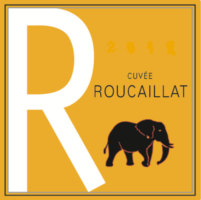History of the Site
Given its topography – a cliff with numerous shelters, dominating a vast hunting land – the site where the estate is located was most likely occupied far into the past.
From the Middle Ages, harvesting wood (live oak), as a resource, was the principle activity undertaken on this land. Metallurgical activities, shown by vestiges of lime kilns, seem to date back to this period, as does a castle built on a slightly more fertile, neighboring tenement. The utilization of wood (for glass manufacturing, heating, and coal and lime production) and slash-and-burn sheep herding brought about the birth of “garrigue” scrub lands made up of low bushes and occasional thickets.
During the 1960’s, sheep herding began to decline, and the “garrigue” became a mere theater of memorable hunting scenes and battles against wild fires.
History of the Estate
The estate was recently created from scratch. It is located in this “garrigue,” once exploited for its wood and extensively pastured by the county’s many sheep herds. The purchase of these “garrigue” lands was motivated by a desire to develop its hidden potential value. Alain Reder’s Algerian origins and his experience with difficult cultivation conditions and rural development enabled him to bring such an undertaking to fruition. Between 1973 and 1979, only his own sheep grazed these lands, allowing for the construction of housing, a barn, the creation of access roads, and the installation of electricity. He inherited vines upon the death of his father, Lucien Reder, providing him with the patrimony necessary for him to create a vineyard. The planting of the vines followed years of efforts to better the land for his herds. It was, therefore, undertaken with full awareness of the land’s potential. Eleven hectares of vines were planted in the space of two years and began producing five years later. During this period, the herds were gradually sold off, and the barn was transformed into a winery. In 2001, Alain’s son, Paul, took over the business after a year working side-by-side with his father.
Geography
The estate is situated five kilometers to the northwest of the village of Cournonterral (made famous by its Pailhasses festival) and 15 kilometers north of the port of Sète. The vines are located on the slope of a cliff whose altitude averages approximately 300 m and are laid out at altitudes varying between 140 m and 200 m. The dominant sun exposure is southeastern. The climate is influenced by both the sea and the mid-sized neighboring hills. In the summer, nights are cool and dry; temperatures rise quickly in the morning, due to sun exposure, but are tempered in the afternoon by sea breezes that carry a bit of much-appreciated moisture to the vines. The land is predominantly calcareous (of Jurassic age), combined with dissolving clay. There is, however, a large variety of limestone, due to the presence of numerous faults that are more or less aligned in a corridor below the vineyard. The limestone is, therefore, intensely fractured, creating a good environment to plant the vines.
Cultivation
The land is neither tilled nor weeded – Grasses grow naturally (but wilt with the first June heat waves) – Trellising – Hand-harvesting.
Vinification
The grapes are de-stemmed. Each plot and each grape variety is worked separately. Skin maceration or pressing is undertaken, depending on the grape variety. Static cold racking precedes fermentation at a controlled temperature of 19-20°C. The wine is allowed to mature on the lees for four to nine months. Bottling occurs eight to nine months after the harvest.

